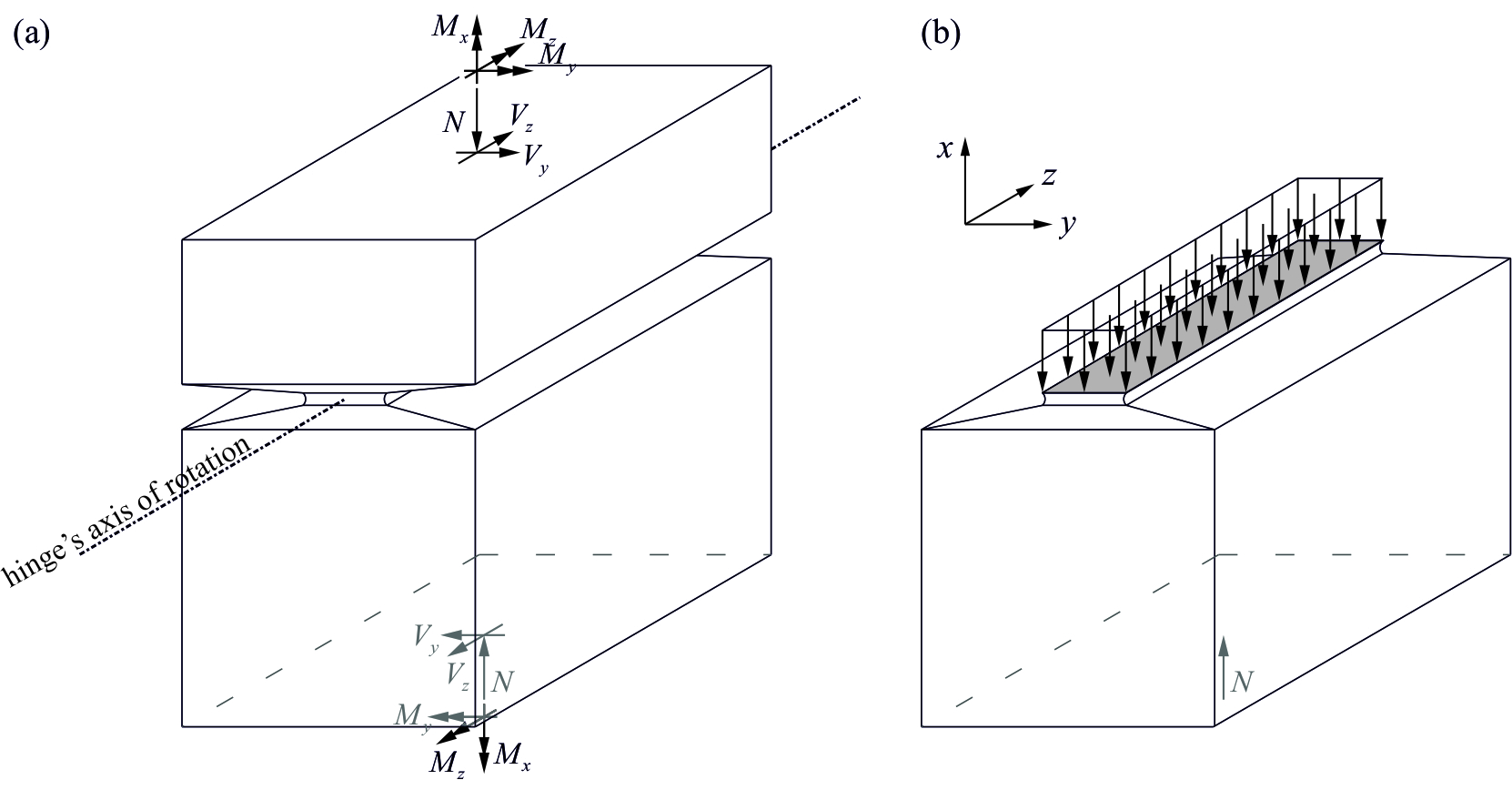Load-bearing behaviour of partially loaded reinforced concrete blocks and concrete hinges
Concrete hinges are monolithic, yet articulated connections in structural concrete (Fig. 1a). Making use of a suitably tapered section, compression stresses are centred in a very small zone (“throat” of the hinge), allowing for large rotational movement while opposing little moment resistance.
Concrete hinges have been successfully used in building and bridge constructions for more than a century to reduce undesirable stresses, especially those caused by restrained deformations. Compared to fixed mechanical bearings, which serve the same purpose, concrete hinges have numerous advantages, especially in terms of cost-effectiveness, durability, robustness and sustainability. Despite these advantages and the good experience in practical applications, however, concrete hinges have lost importance in recent decades. A major reason for this is that their design and detailing rely on relatively old guidelines based on empirical rules, which are only partially compatible with today's design concepts. Already for the fundamental case of axial compressive loading (which is basically a case of partial area loading, see Fig. 1b), a remarkable knowledge gap exists. The understanding of the behaviour of concrete hinges under general loading is linked with even greater uncertainties and open questions.
This research project tackles these lacunae with a combination of analytical, numerical and experimental investigations, aimed at developing mechanically consistent and experimentally validated models (see Fig. 2). The outcomes of this study shall eliminate the existing uncertainties arising when dealing with concrete hinges and allow to reliably design and assess them in the future.


![Enlarged view: Figure 2: Discontinuous stress field solutions for partially loaded reinforced concrete blocks (only half of the block is shown): (a) Bottle-shaped stress field [Markić and Kaufmann 2018 ], (b) Wedge-and-fan stress field [Markić et al. 2018 ].](/research/selected-research-projects/betongelenke/_jcr_content/par/fullwidthimage_2017724712/image.imageformat.1286.934255682.jpg)